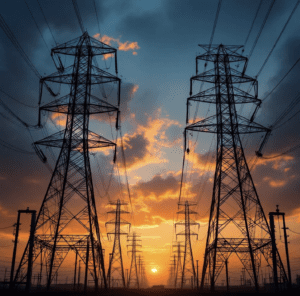Virginia regulators are ready to consider a proposal to join the Regional Greenhouse Gas Initiative (RGGI) in the Northeast, becoming the 10th state in the nation’s largest carbon-trading market. The move comes as newly elected governor Ralph Northam, a Democrat, prepares to take office in a state where the Republican-led legislature has shot down previous attempts to join the RGGI.
Regulators at the state’s Air Pollution Control Board will take up the proposal November 16; analysts say the draft rule, which was released just after the November 7 election, was written in a way to avoid needing approval from state lawmakers. Outgoing Gov. Terry McAuliffe, also a Democrat, in May 2017 issued an executive order for state regulators to create a market-based trading program for CO2 emissions. Northam’s Republican opponent in the recent election, Ed Gillespie, had said he would repeal the order if elected.
New Jersey also is expected to soon rejoin the RGGI. Gov.-elect Phil Murphy, a Democrat, said the state would immediately rejoin the program when he takes office. Current Republican Gov. Chris Christie pulled New Jersey out of the group in 2011.
The Virginia rule as currently written would cap emissions from utilities in the state beginning in 2020, and mandate a 30% reduction by 2030. At the time of his executive order, McAuliffe said “The threat of climate change is real, and we have a shared responsibility to confront it. As the federal government abdicates its role on this important issue, it is critical for states to fill the void.”
The rule’s mandates are similar to those in the Obama administration’s Clean Power Plan, which current Environmental Protection Agency (EPA) Administrator Scott Pruitt has vowed to roll back. Michael Dowd, who wrote the Virginia regulation and is director of the air division in the state’s Dept. of Environmental Quality, told local media his group has “not gotten a lot of pushback” to the proposed rule.
If the Air Pollution Control Board approves the proposed rule, it will enter a 60-day public comment period before a final rule would be drafted. Dowd said the goal is for a final rule to be ready for board approval in summer 2018.
Virginia’s electric utilities have reduced their emissions for more than a decade, primarily as natural gas has overtaken coal as the dominant energy source in the state. Coal provided 45% of Virginia’ power generation in 2005; it has since fallen to about 20%, with natural gas providing about 42% of today’s generation. Nuclear power accounts for about 31% of generation, with renewables and hydropower combined at about 5%, according to state data.
Dominion Energy’s Pam Faggert, the utility’s chief environmental officer, in a statement said “while we haven’t yet had a chance to fully study the state’s draft proposal, we expect to fully meet whatever regulatory requirements that result.” Appalachian Power, another utility in the state, in a statement before the proposed rule was announced said joining the RGGI could mean the state is ceding control over its “emission trajectory and economic well-being.”
The proposed rule would cap CO2 emissions from state utilities at 33 million or 34 million tons in 2020; emissions were at 37.5 million tons in 2016. It then calls for 3% reductions each year for the next 10 years, a level the other nine RGGI states agreed to in August 2017. By joining the RGGI, Virginia—like the other member states—would have the ability to sell emissions allowances at auction, or buy allowances from other members. The allowance structure in Virginia, though, is different; instead of having utilities purchase their credits, they would be given a set number for free, based on their level of emissions. They would be required to sell those credits at auction before they could buy back any allowances needed to cover their emissions.
Should a utility lower its emissions enough to be able to sell more credits than it purchases, it can maintain that revenue, though regulators will have a say in how the utility uses the revenue. For the most part, other RGGI members invest money from the credit auctions into energy efficiency upgrades and to expand renewable energy sources.
Virginia would immediately become the biggest carbon emitter among RGGI members; it would increase the group’s current 2020 emissions cap of about 78 million tons by 40%. The Acadia Center, a climate advocacy and research group, in an analysis said utilities in the nine current RGGI states emitted 79 million tons of CO2 in 2016, a 5% drop from the prior year. The analysis showed emissions in those nine states have dropped 40% since 2008, the year the RGGI was formed. Analysts say the RGGI has been a way for member states to reduce carbon emissions in a more cost-effective way for both states and utilities, and say that adding Virginia would likely further lower costs by expanding the market for credits.
Katie Dykes, chairman of the group’s board of directors and chair of the Connecticut Public Utilities Regulatory Authority, said after the December 2016 auction of allowances that “The use of a market-based system to cap emissions allows for the most cost-effective reductions … and the auctioning of allowances and the reinvestment of auction proceeds provides benefits for consumers while locking in emissions reductions.”
Other states in the RGGI are Connecticut, Delaware, Maine, Maryland, Massachusetts, New Hampshire, New York, Rhode Island, and Vermont.
—Darrell Proctor is a POWER associate editor (@DarrellProctor1, @POWERmagazine).










